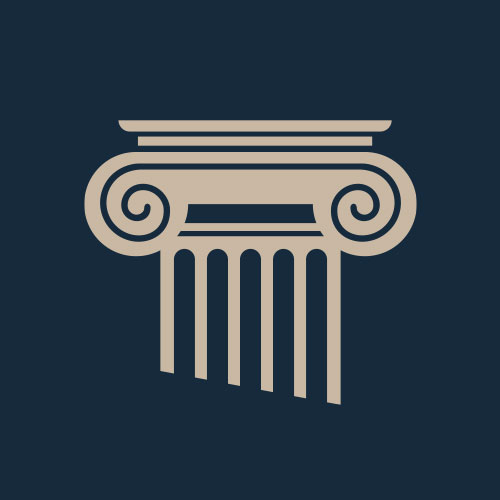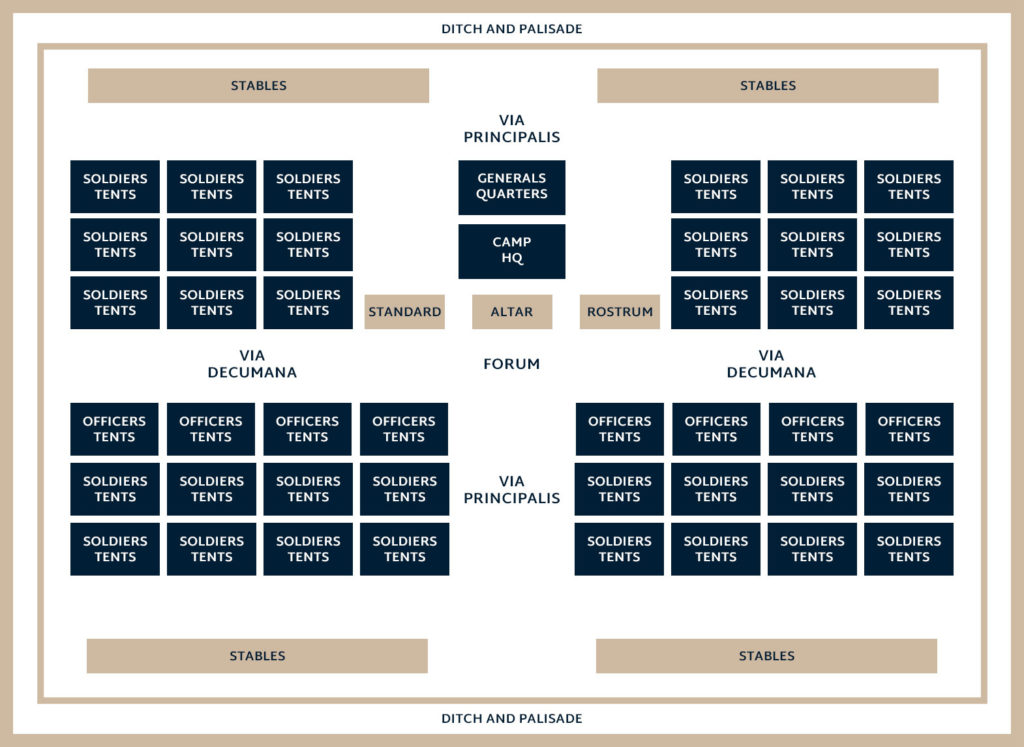Below you find the layout of camp of a Roman army on the march. Every night the legion would halt and erect a camp in this layout. As every Roman force used the same scheme, this meant that every soldier always knew where to find everything. Also this meant that when a soldier would enter the camp of another legion, for example when delivering a message, he would always know where to go.
Notice that the legion’s standards have their place reserved at the center of the camp; in fact they had their own tent.
Introduction The Roman Army was renowned for its unparalleled military prowess, a significant aspect of which was its ingeniously designed camp layouts. These camps, more than mere temporary dwellings, were masterpieces of military engineering, embodying the Romans’ strategic acumen and organizational skills. This article delves into the Roman Army Camp layout, revealing how it fortified the legions’ strength and facilitated their dominance across diverse terrains and prolonged campaigns.
The Importance of Camp Layout in Roman Military Strategy The Roman Army Camp, or castrum, was not just a shelter for the legions but a vital component of their battlefield strategy. Its layout was meticulously planned to ensure efficient troop movement, quick assembly for battle, and effective defense against attacks. The camp’s design reflected the Roman military’s hierarchical structure, with each unit allocated specific sections, thereby streamlining operations and command.
Standardized Design: A Glimpse into Roman Engineering One of the most remarkable aspects of the Roman Army Camp was its standardized design. Whether in the forests of Germania or the deserts of North Africa, Roman camps followed a uniform layout, typically rectangular with rounded corners to minimize blind spots. This consistency allowed engineers and soldiers to construct camps swiftly, often within hours after a march, providing a secure base each night.
Key Features of Roman Army Camps Central to the camp was the Praetorium, the commander’s quarters, strategically located for optimal communication and control. Surrounding it were the Principia (headquarters), Valetudinarium (field hospital), and Horreum (granary), each placed with tactical precision. The camp’s design facilitated not only administrative efficiency but also rapid response to medical, supply, or defensive needs.
The Role of Fortifications in Camp Security Roman camps were fortified with imposing walls, deep ditches, and sturdy gates, designed to repel sudden enemy onslaughts. These fortifications, complemented by watchtowers and patrolling guards, made the camps nearly impregnable, enabling the Romans to maintain a defensive stronghold in hostile territories.
Case Studies: Notable Roman Army Camps Historical excavations have unveiled the remnants of Roman camps across Europe, such as in Vindolanda in Britain and the Limes Germanicus along the Rhine. These sites reveal the strategic placements of camps near water sources, trade routes, and high ground, showcasing the Romans’ strategic selection of camp locations to secure logistical advantages and tactical superiority.
Conclusion The Roman Army Camp layout was a testament to the ancient Romans’ military ingenuity and engineering brilliance. Its strategic design played a crucial role in the legion’s ability to conquer and maintain vast territories. Today, the principles of Roman camp layout continue to influence modern military tactics, underlining the enduring legacy of Roman military science.

Historian Franco Cavazzi dedicated hundreds of hours of his life to creating this website, roman-empire.net as a trove of educational material on this fascinating period of history. His work has been cited in a number of textbooks on the Roman Empire and mentioned on numerous publications such as the New York Times, PBS, The Guardian, and many more.

